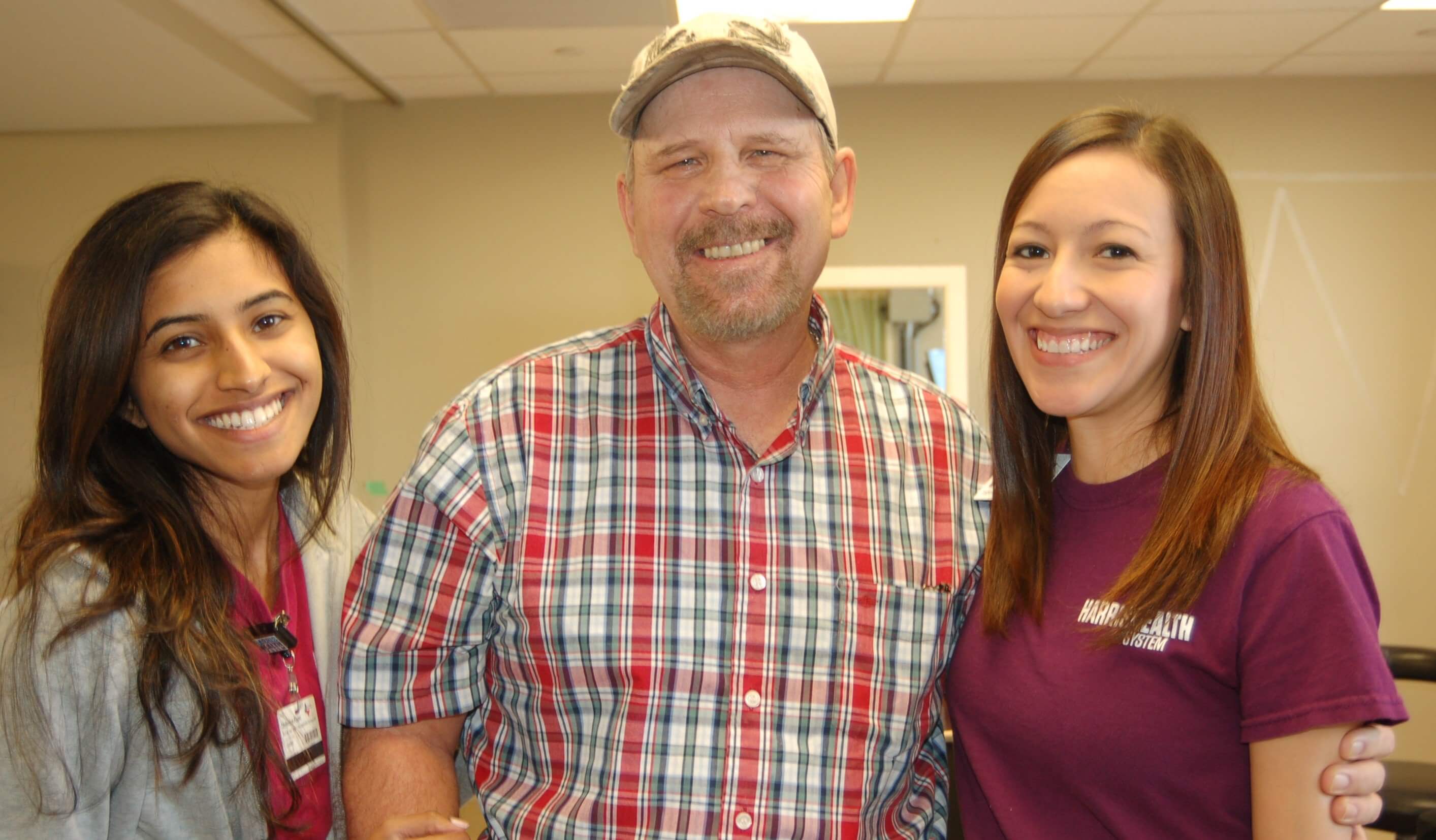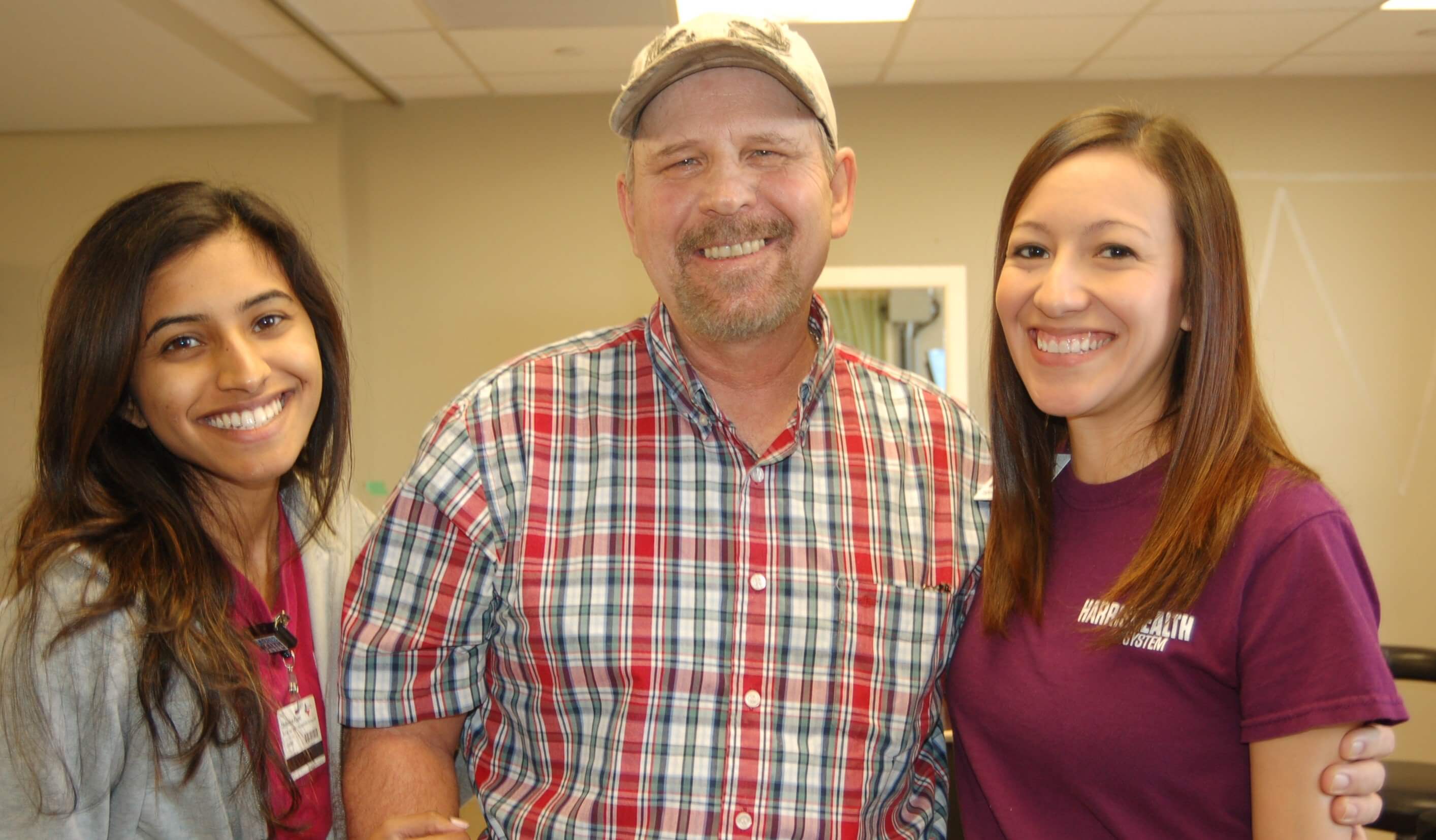Physical Therapy Takes Stroke Patient from Wheelchair to Cane

Patrick Hetmaniak has come a long way since suffering a massive stroke last year. The first time he came to Harris Health System’s rehabilitation center at Quentin Mease Hospital, he was in a wheelchair and couldn’t walk.
Today, he walks into his weekly physical therapy appointments using a cane and minimal help.
“That’s the reason I got into physical therapy,” says Tahnee De la Cerda, PT, DPT, clinical physical therapist at Harris Health Quentin Mease. “Seeing patients progress is so rewarding.”
De la Cerda and Hetmaniak have been a team for almost a year. Hetmaniak’s stroke left him paralyzed on his right side and claimed his ability to walk and talk. With De la Cerda’s help, he’s regained strength, mobility and has gone from a wheelchair to a walker and, now, a cane.
Physical therapists like De la Cerda treat individuals who have medical issues or conditions that limit their abilities to move and perform functional daily life activities; they examine individuals and develop treatment plans to help them move, reduce pain, restore function and prevent disability.
De la Cerda was introduced to physical therapy when she suffered a shoulder injury in high school. When in physical therapy school, she rotated through the different areas of PT—orthopedics, sports, geriatrics and others—and chose to work with neurological patients like stroke sufferers.
Hetmaniak is lucky to be alive. He was in an intensive care unit for five days with extreme swelling in his brain.
“There were times we weren’t sure what was going to happen,” says Shannon Hetmaniak, Patrick’s brother who moved to Houston to care for him. “His care here has been great. This team is really in his corner, encouraging him and giving him hope. When he started coming here, he started laughing again.”
Laughing is a good release at physical therapy sessions, which can be intense.
“It’s hard work,” De la Cerda says. “Patients don’t initially like the exercises that we are putting them through during therapy sessions because they are strenuous and sometimes painful, but they see the benefits later when they look back and see the progress they’ve made.”
Recently, De la Cerda worked with Hetmaniak on exercises to increase weight-bearing onto his right leg for stance control and strengthening. Since he is able to stand easily without assistance, he is at the point where his PT adds tools and modifies exercises to shift his weight to his weaker side. They also worked on strengthening his gluteus maximus and quadriceps muscles, which play an important role for improving his gait.
While Hetmaniak still has problems talking, the smile on his face when he’s with De la Cerda and Christine Rajan, OTR, MOT, an occupational therapist, confirms what his brother says, “They’ve become our family.”
Shannon Hetmaniak has been so impressed with his brother’s recovery; he is collaborating with staff on creating a new hospital support group next year for stroke and brain injury survivors and caregivers. He will serve as a founding member.
“We want to provide a supportive environment for survivors and their caregivers to receive professional guidance, information and coping strategies,” De la Cerda says. “This support group will be a place for them to share their experiences and realize they are not alone in terms of their changed life.




